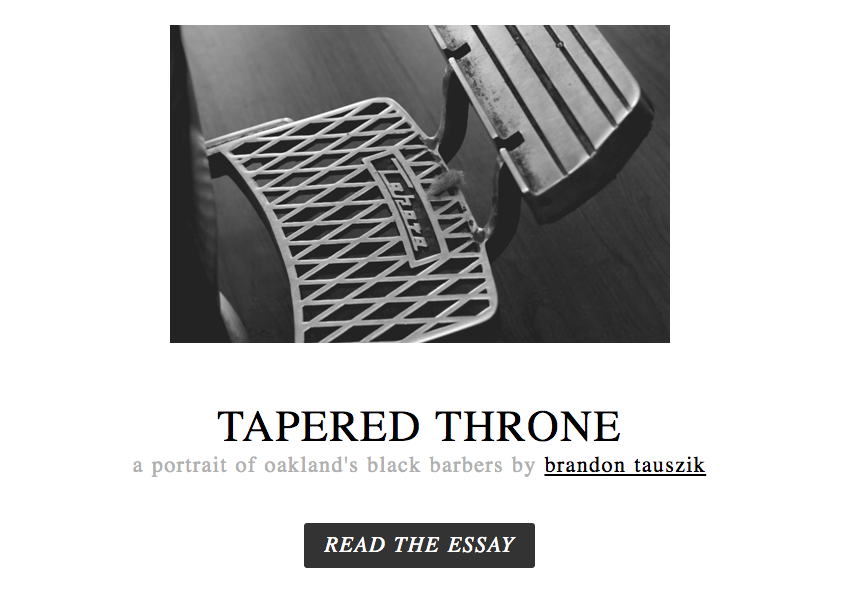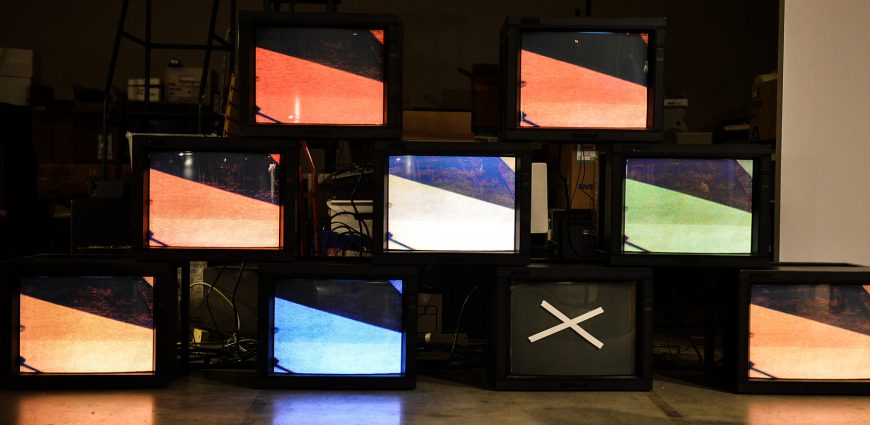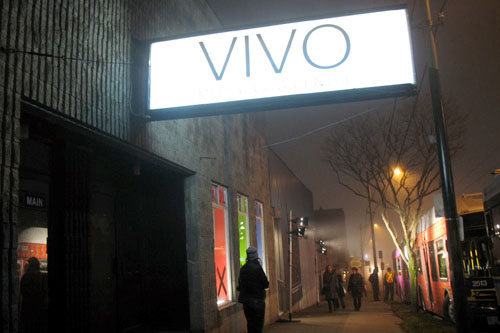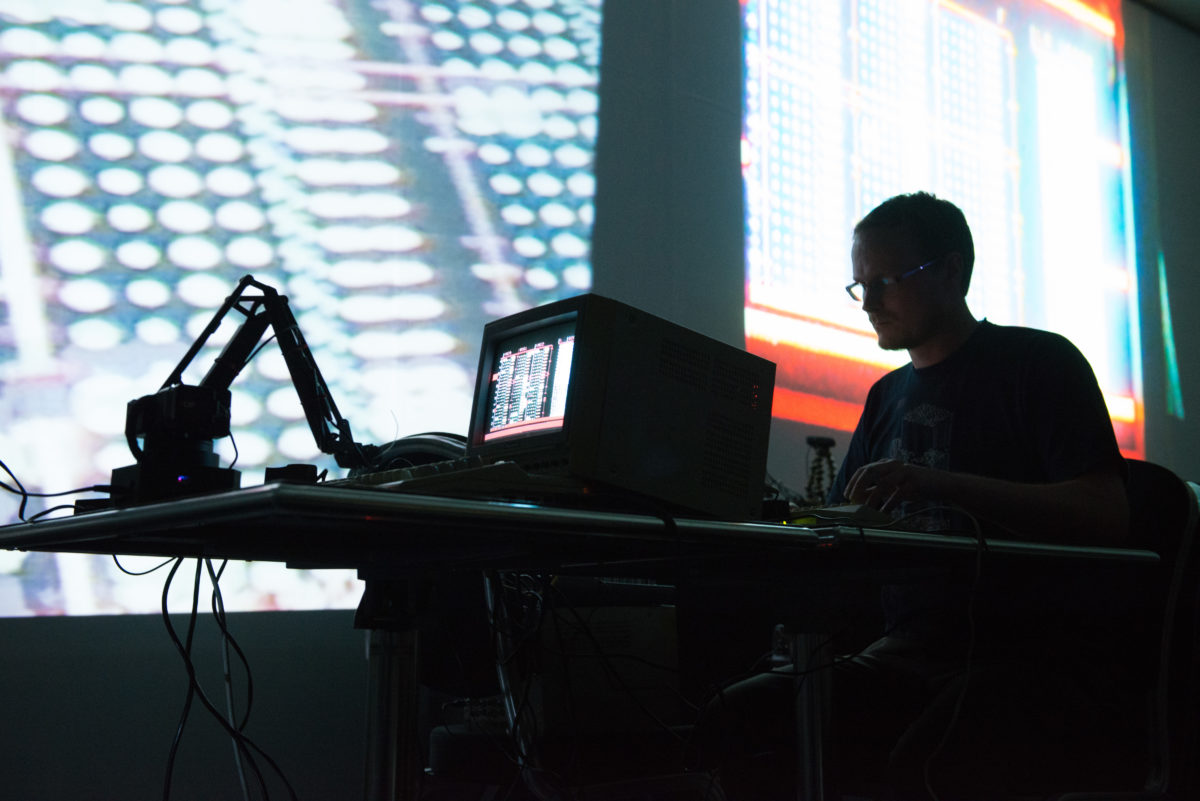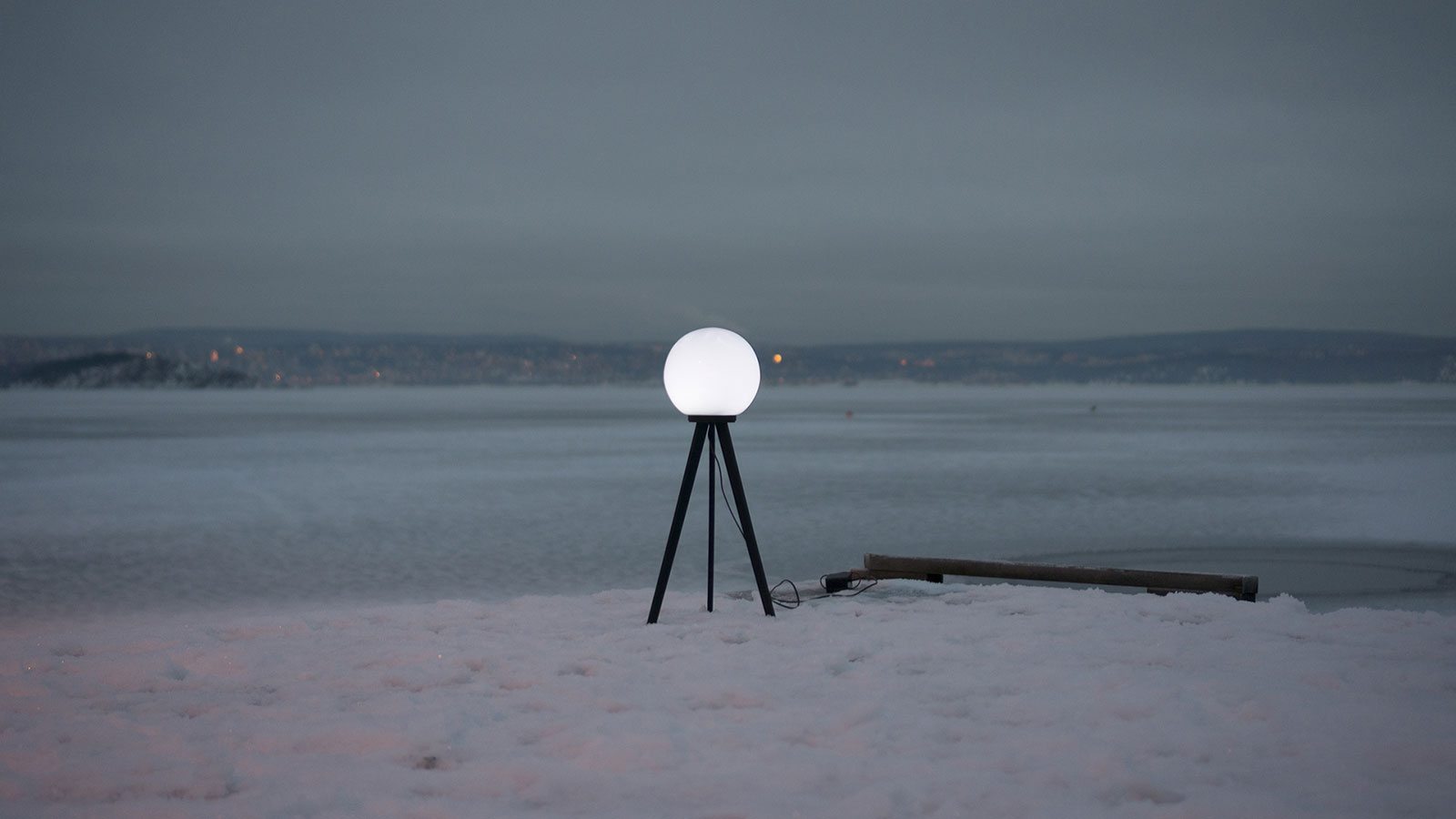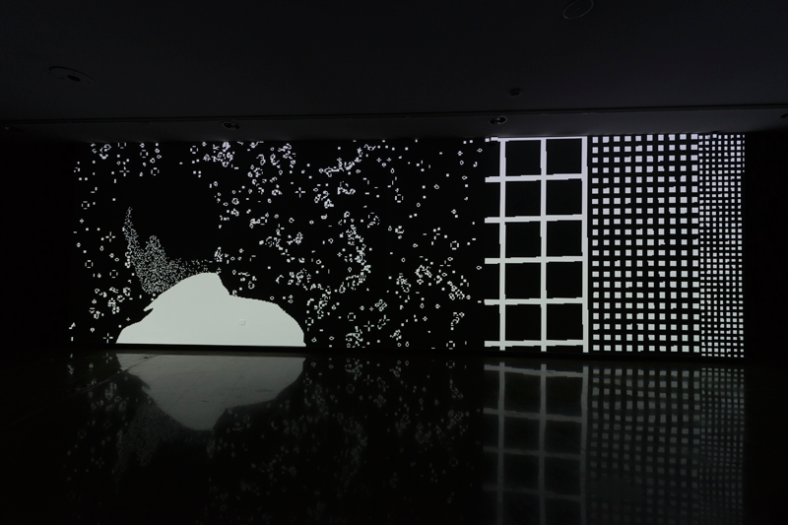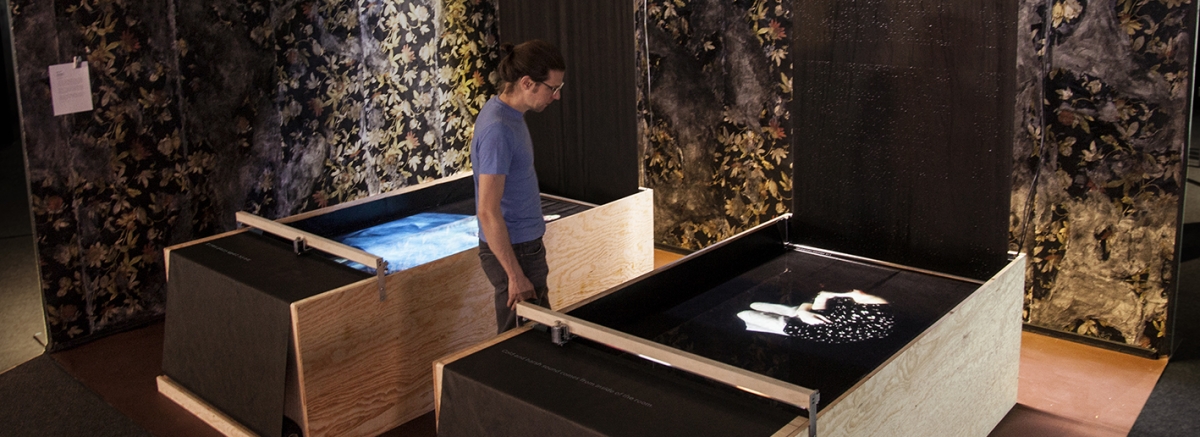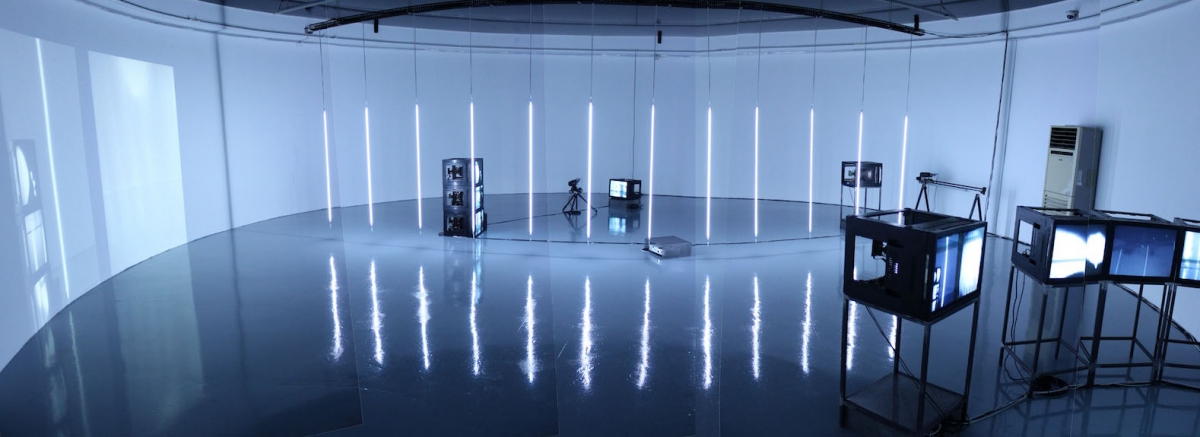Brandon Tauszik’s GIF images of black barbers in Oakland, California reveal the resolve of a group of ardent professionals. The project illuminates the position of barbers as conduits of black communities; of Oakland. Behind these portraits are the aspirations of men who are not just making a living, but who see the value of their labors in the development of black community life. Like the GIF images themselves, these men and their shops are not static. Even as they stand behind their barber’s chair with arms propped up clutching the clippers, they are constantly in motion and in tune with the comings and goings of the people in their city.[1]
foundyou.online is a directory for new media art. You can browse the index of organizations, and events/festivals. You can also search by location, and sort by tag or decade.
 Melting Room by Marpi
Melting Room by Marpi
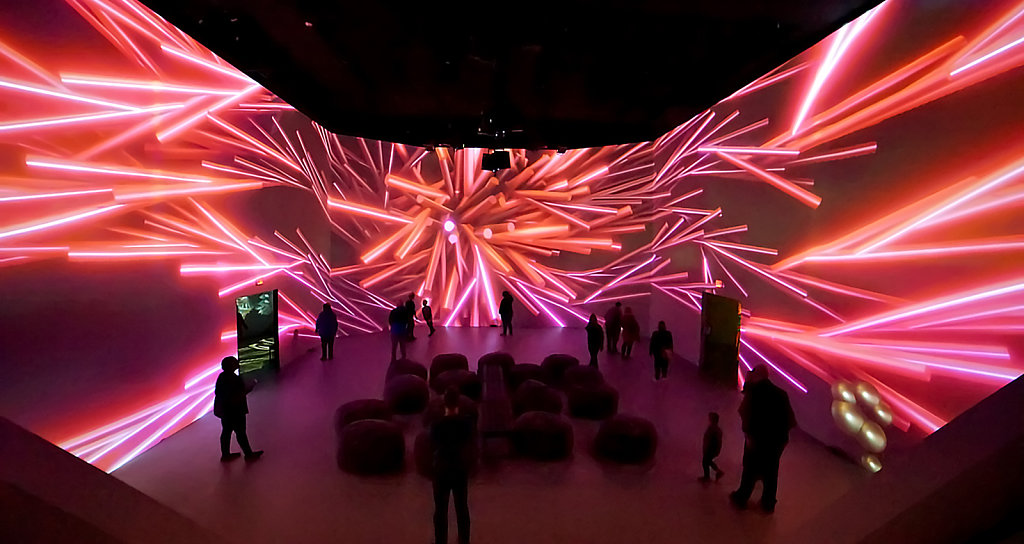 New Nature by Marpi
New Nature by Marpi
 Binary Garden by Marpi
Binary Garden by Marpi
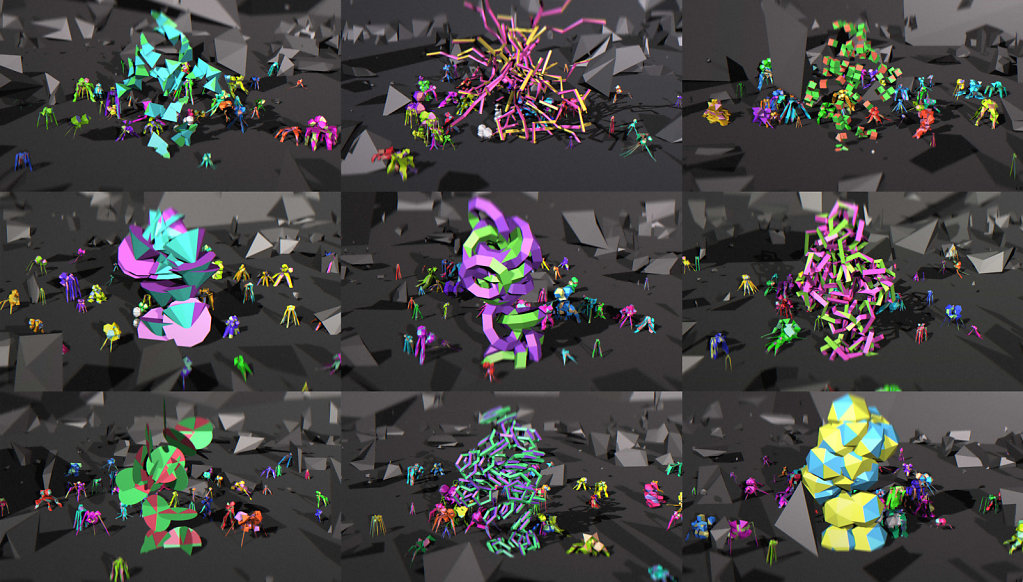 Virtual Reality Avatars by Marpi
The Future Of Art - Creating Digital Installation Masterpieces
Virtual Reality Avatars by Marpi
The Future Of Art - Creating Digital Installation Masterpieces
Marpi is a Polish-born, San Francisco-based artist who creates interactive, scalable work across multiple platforms in digital and physical space. In his current practice, he designs and builds vast digital ecosystems that encompass both environments and creatures that are brought into being and shaped by users. His recent work provides different windows into the same universe, where sound, gestures, and other inputs from our world provide the basis for completely new forms of life.[1]
Marpi creates work through Marpi Studios. He works with a small network of creative collaborators - designers, technologists, musicians, and others - to create exhibits, events, and other commissions throughout the world.[1]
At the New Westminster New Media Gallery, you’ll experience art that has been created in a world transformed by technology. Discover art that plugs in, lights up, responds, senses, and communicates. Encounter art that reflects our contemporary world and sheds light on our past. Respond to challenging materials, ideas, and issues. Take away a little bit of wonder and a wealth of inspiration.[1]
VIVO Media Arts Centre, a member of British Columbia Museums Association, brings together artists, video and filmmakers, researchers and activists interested in the history of video-making and its evolution towards the art form. VIVO’s educational program extends beyond the boundaries of video distribution and video archiving. The workshops program offers beginner and intermediate level classes on programming, projection mapping, lighting, sound recording by local experts. VIVO accepts research applications to work closely with the Crista Dahl Media Library and Archive thus contributing to the local and international art and research community and encouraging curatorial collaborations.[1]
VIVO’s mandate is to directly support artists and independent community-based producers to develop, exchange, and disseminate their skills in a supportive environment through accessible services and programs. Our vision is a robust, diverse, and vibrant media arts sector: a catalyst for critical and innovative engagement with the material forms and cultural meanings of media and technology. VIVO’s programs offer a broad range of services and opportunities to artists and the public. They include:
- Access to the material necessities for quality production through affordable equipment rentals, editing facilities, software, and production space.
- A broad range of skill development and education opportunities that encourage the exploration of technology and aesthetics within a critical, artistic framework.
- Public programming: events, exhibitions, residencies, co-productions, and critical forums.
- International distribution, work exchange, and media art preservation which supports the aspirations and livelihood of artists.
- Western Canada’s largest public reference library and archive of media art, independent video, and related publications, documents, audio recordings, and photographs.
[2]
Robot music is an ongoing robotic research project between Goto80 and Jacob Remin, centered around automation, creation and loss of control. The project was initiated in 2017 and has been shown in various forms at Illutron (Copenhagen), Algomech Festival (Sheffield), Internetdagarna (Stockholm), 34C3 (Leipzig), among others.[1]
Central to robot music, is robotic arms that play music on a Commodore 64 and other sound machines. The robot remixes pre-made songs, or makes its own. While the robot performs, the artists sit next to it to talk to people about robots being “creative” and “stealing our jobs”. [1]
Satellite Lamps is a project that reveals one of the most significant contemporary technology infrastructures, the Global Positioning System (GPS).[1]
“Satellite Lamps shows that GPS is not a seamless blanket of efficient positioning technology; it is a negotiation between radio waves, earth-orbit geometry and the urban environment. GPS is a truly impressive technology, but it also has inherent seams and edges.”[1]
Satellite Lamps is a series of lamps that change brightness according to the accuracy of received GPS signals, and when we photograph them as timelapse films, we start to build a picture of how these signals behave in actual urban spaces.[1]
School for Poetic Computation is an artist run school in New York that was founded in 2013. A small group of students and faculty work closely to explore the intersections of code, design, hardware and theory — focusing especially on artistic intervention. It’s a hybrid of a school, residency and research group.Our motto is: more poetry, less demo [1]
The school for poetic computation is organized around exploring the creative and expressive nature of computational approaches to art and design. The school approaches writing code like creative writing — focusing on the mechanics of programming, the demystification of tools, and hacking the conventions of art-making with computation.[2]
We value the craft necessary to realize an idea, recognizing that every writer needs space and time to hone their trade. Our school aims to provide a safe haven for you to get acquainted with the craft of coding at your own pace, make it your own, and investigate the space between creative process and craft. This takes conversations with colleagues and the right push at the right time.[2]
The school aims to be more than a technical bootcamp. It is an opportunity to work intensively with a small group of students, faculty, and artists to explore questions about the poetics of computation. For us, computation is poetic when technology is used for critical thinking and aesthetic inquiry – a space where logic meets electricity (hardware), math meets language (software) and analytical thinking meets creative experimentation.[2]
This is also a school for teaching. Every student who comes here will be asked to share their expertise with their classmates in the form of workshops and outreach.[2]
The goal of the school is to promote completely strange, whimsical, and beautiful work – not the sorts of things useful for building a portfolio for finding a job, but the sort of things that will surprise and delight people and help you to keep creating without a job. However, employers tell us they appreciate this kind of work as well.[2]
This is not a program to get a degree, there are large programs for that. This is not a program to go for vocational skills, there are programs for that. This is a program for self initiated learners who want to explore new possibilities. This is a program for thinkers in search of a community to realize greater dreams.[2]
Peter Burr is an artist from Brooklyn specializing in animation and installation. Using computer animation to create images and environments that hover on the boundary between abstraction and figuration, Burr has in recent years devoted himself to exploring the concept of an endlessly mutating labyrinth. Existing as stand-alone pieces, much of his work is also in the process of expanding into a video game through the support of Creative Capital and Sundance. Previously, he worked under the alias Hooliganship, and in 2006 founded the video label Cartune Xprez, through which he produced hundreds of live multimedia exhibitions and touring programs showcasing a multi-generational group of artists at the forefront of experimental animation. Here he discusses ways to stay healthy as a creator, what it means to make art in the digital realm, and the plant-like possibilities of games.[1]
 Natalie Jeremijenko - MUSCLExCHOIR Performing Live! 2014
blue mussels (Mylilus edulis) - each with an IP address, magnets, hall effect sensor, instant ocean, live rock with coraelline algae, acrylic, tubes, wild observatories and visualight.org app to change the lights.
Natalie Jeremijenko - MUSCLExCHOIR Performing Live! 2014
blue mussels (Mylilus edulis) - each with an IP address, magnets, hall effect sensor, instant ocean, live rock with coraelline algae, acrylic, tubes, wild observatories and visualight.org app to change the lights.
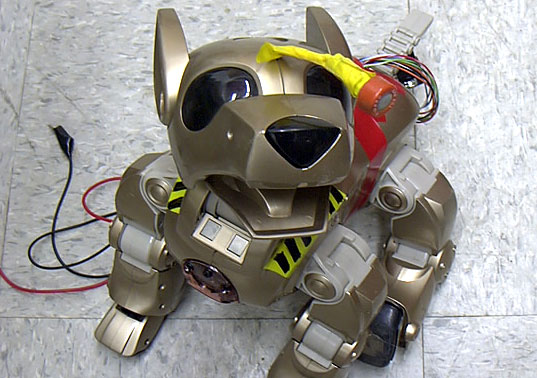 Feral Robotic Dogs, pollution sniffing eco-dogs
Radical Design For Environmental Health | Natalie Jeremijenko | TEDxSydney
Feral Robotic Dogs, pollution sniffing eco-dogs
Radical Design For Environmental Health | Natalie Jeremijenko | TEDxSydney
Natalie Jeremijenko (born 1966) is an artist and engineer whose background includes studies in biochemistry, physics, neuroscience and precision engineering. She is an active member of the net.art movement, and her work primarily explores the interface between society, the environment and technology. She has alternatively described her work as "X Design" (short for experimental design) and herself as a "thingker", a combination of thing-maker and thinker. She is currently an associate professor at New York University in the Visual Art Department, and has affiliated faculty appointments in the school's Computer Science and Environmental Studies.[1] She directs the Environmental Health Clinic at New York University, which is modeled on the health clinic model, but offers patients prescriptions not for pharmaceuticals but for art, design and participatory projects. [2]
The Center for Digital Arts and Experimental Media, or DXARTS, is a program offering PhD studies in new media art at the University of Washington. The goal of doctoral education in Digital Arts and Experimental Media is to create opportunities for artists to discover and document new knowledge and expertise at the most advanced levels higher education can offer. While creating new art is at the center of all activities in the program, the DXARTS PhD is a research-oriented degree requiring a substantial commitment to graduate-level study and reflection. The Ph.D. degree prepares artists to pursue original creative and technical research in Digital Arts and Experimental Media and pioneer lasting innovations on which future artists and scholars can build.[1]
DXARTS fosters the invention of new forms of digital and experimental arts by synthesizing expanded studio research with pioneering advances in digital computing, information technologies, performance, science, and engineering. Embracing an expansive range of arts practice, theory, and research across multiple disciplines, DXARTS creates opportunities for artists to discover and document new knowledge and expertise in an evolving field of media arts.[2]
